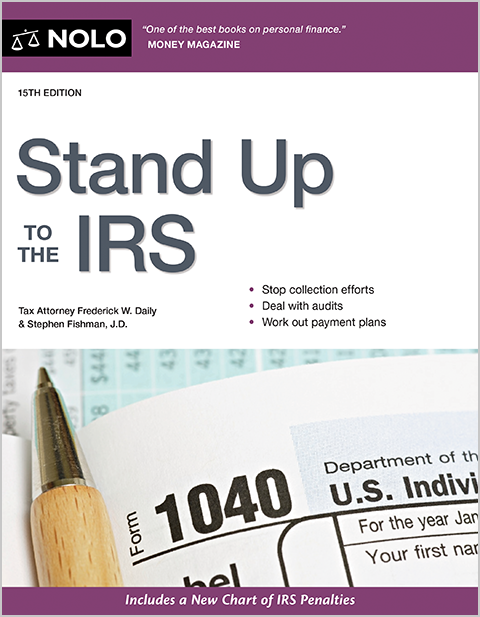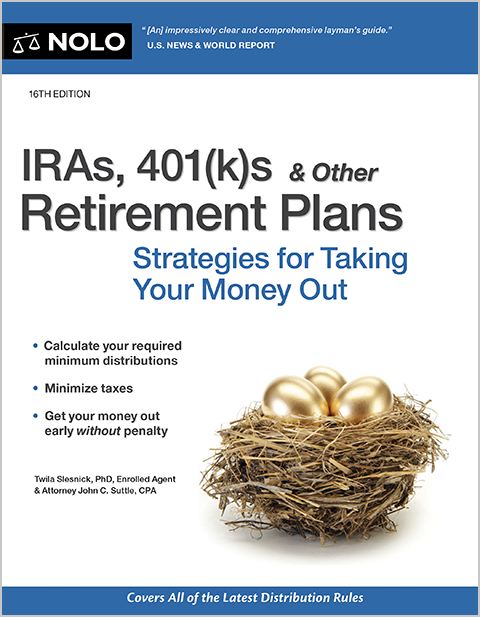If you're disabled, you are entitled to an array of disability tax deductions and credits.
If you're disabled, you are entitled to an array of tax credits and deductions. These may not only eliminate your income tax liability, they may also result in the IRS sending you money.
You are disabled if you have:
- a physical or mental disability (for example, blindness or deafness) that functionally limits your being employed, or
- a physical or mental impairment (including, but not limited to, a sight or hearing impairment) that substantially limits one or more of your major life activities, such as performing manual tasks, walking, speaking, breathing, learning, or working.
Major tax benefits for the disabled include:
Larger Standard Deduction
If you are legally blind, you may be entitled to a higher standard deduction on your tax return. The standard deduction amount depends on your filing status, whether you are 65 or older or blind, and whether an exemption can be claimed for you by another taxpayer. For details, see IRS Publication 501, Exemptions, Standard Deduction, and Filing Information.
Some Disability Payments Not Taxable
Military service-connected disability payments are not taxable. However, if you receive a disability pension based on years of service, in most cases you must include it in your income.
Other disability-related payments that are not taxable include:
- benefit payments from a public welfare fund, such as payments due to blindness
- workers' compensation for an occupational sickness or injury if paid under a workers' compensation act (except for amounts that offset Social Security disability benefits)
- compensatory (but not punitive) damages for physical injury or physical sickness
- disability benefits under a "no-fault" car insurance policy for loss of income or earning capacity as a result of injuries
- compensation for permanent loss or loss of use of a part or function of your body, or for your permanent disfigurement.
See IRS Publication 525, Taxable and Nontaxable Income.
Also, most of an individual's Social Security disability benefits are not taxed. For more information, see Nolo's article on the taxation of Social Security disability benefits.
Impairment-Related Work Expenses
If you have a physical or mental disability that limits your being employed, or substantially limits one or more of your major life activities, such as performing manual tasks, walking, speaking, breathing, learning, and working, you can deduct your impairment-related work expenses. These are expenses for care and other disability-related services at your place of work or outside of your workplace that are also needed for you to do your work. For example, a blind person could deduct the cost of employing a reader for work and a deaf person could deduct the cost of a sign language interpreter used during work meetings.
If you qualify for this deduction, your impairment-related work expenses are not subject to the 7.5% of adjusted gross income limit that applies when you deduct medical expenses as a personal itemized deduction.
See IRS Publication 529, Miscellaneous Deductions.
Credit for the Elderly or Disabled
You may be entitled to a tax credit if you were permanently and totally disabled when you retired. This credit is for lower income individuals--for example, a single disabled person does not qualify if his or her adjusted gross income exceeds $17,500. For information on this credit, see IRS Publication 524, Credit for the Elderly or the Disabled.
Medical Expenses
Disabled people who itemize their deductions can deduct their medical expenses as a personal itemized deduction. Eligible expenses include both health insurance premiums and out-of-pocket expenses not covered by insurance. However, this deduction is limited to the amount that such expenses exceed 7.5 % of adjusted gross income during 2017 and 2018, 10% of AGI during 2019 and later. See the Nolo article Deducting Medical Expenses.
Earned Income Tax Credit
Disabled individuals who work but have low incomes may also qualify for the Earned Income Tax Credit. See the Nolo article The Earned Income Tax Credit: A Valuable Credit for Low Income Earners.
ABLE Accounts
Since 2015, disabled individuals and their families have been allowed to establish a special tax-advantaged savings account: the ABLE Account (named for the Achieving a Better Life Experience). The accounts give disabled people the ability to save money to help pay for their expenses without jeopardizing their eligibility to receive government assistance. Disabled individuals or their families may establish a single ABLE account, and family and friends may contribute a total of $14,000 into the account each year. The Tax Cuts and Jobs Act increases the total amount that may be contributed to an ABLE account during 2018 through 2025. After the $14,000 annual limit is reached, the disabled individual may make an additional contribution equal to the lesser of:
- the federal poverty line for a one-person household, or
- the individual's compensation for the year.
For more details on ABLE accounts, see the Nolo article ABLE Bank Accounts for People with Special Needs.
Talk to a Tax Attorney
Need a lawyer? Start here.
How it Works
- Briefly tell us about your case
- Provide your contact information
- Choose attorneys to contact you
- Briefly tell us about your case
- Provide your contact information
- Choose attorneys to contact you

